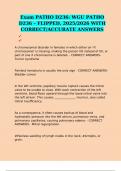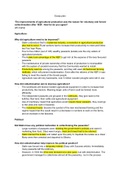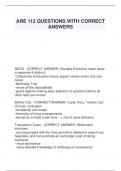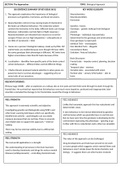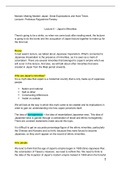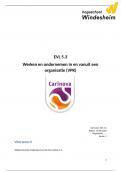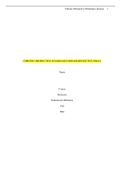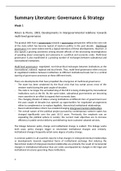crow’s perception of human faces
John M. Marzluffa,1, Robert Miyaokab, Satoshi Minoshimab, and Donna J. Crossb
a
School of Environmental and Forest Sciences and bDepartment of Radiology, University of Washington, Seattle, WA 98195
Edited by Marcus E. Raichle, Washington University in St. Louis, St. Louis, MO, and approved August 6, 2012 (received for review April 16, 2012)
Crows pay close attention to people and can remember specific neuronal circuitry activated in response to the sight of familiar
faces for several years after a single encounter. In mammals, in- people whom we expect crows to recognize as either threatening
cluding humans, faces are evaluated by an integrated neural or not threatening. To accomplish this goal, 12 adult male crows
system involving the sensory cortex, limbic system, and striatum. were captured by investigators wearing identical masks, a process
Here we test the hypothesis that birds use a similar system by which we had previously demonstrated was sufficient for crows to
providing an imaging analysis of an awake, wild animal’s brain as learn the masks as a “threatening” face (1). Over their 4-wk
it performs an adaptive, complex cognitive task. We show that captivity, crows were fed by caregivers wearing an alternative,
in vivo imaging of crow brain activity during exposure to familiar “caring,” mask (Fig. 1). We used positron emission tomography
human faces previously associated with either capture (threatening) (PET) combined with administration of [F-18]fluorodeoxyglucose
or caretaking (caring) activated several brain regions that allow (FDG) to assess the brain activity of wild crows responding
birds to discriminate, associate, and remember visual stimuli, includ- adaptively to these faces. During an uptake phase when FDG
ing the rostral hyperpallium, nidopallium, mesopallium, and lateral accumulates in the brain proportional to regional brain activity,
striatum. Perception of threatening faces activated circuitry includ- we kept the awake crow in a controlled physiologic condition and
ing amygdalar, thalamic, and brainstem regions, known in humans showed it one of the following: (i) a person wearing the mask that
and other vertebrates to be related to emotion, motivation, and captured it, (ii) a person wearing the mask that fed it, or (iii) an
conditioned fear learning. In contrast, perception of caring faces empty room. Once FDG was predominantly fixed in the brain, the
activated motivation and striatal regions. In our experiments and subject could be imaged under anesthesia. The resultant images
in nature, when perceiving a threatening face, crows froze and fixed showed brain activity during the uptake phase. Although pre-
their gaze (decreased blink rate), which was associated with activa- viously used for human brain mapping research (8), our experi-
tion of brain regions known in birds to regulate perception, atten- ment adapts this technology to map the response of a bird’s brain
tion, fear, and escape behavior. These findings indicate that, similar
to a natural, visual, cognitive task and allows us to image a non-
to humans, crows use sophisticated visual sensory systems to rec-
human animal responding to a human face (9, 10).
ognize faces and modulate behavioral responses by integrating vi-
sual information with expectation and emotion. Our approach has Results and Discussion
wide applicability and potential to improve our understanding of
The visual system of birds and primates is supported by perhaps
the neural basis for animal behavior.
the most advanced and sophisticated neural sensory system
known (11). Much of this complexity is evident in the whole-
| |
American crow cognition facial recognition | brain responses of crows in our visual discrimination experi-
|
[F-18]fluorodeoxyglucose–PET imaging learned fear
ments. The pattern of FDG uptake during visual stimulation
revealed activation of the crows’ tectofugal visual pathway and
A variety of species are able to discriminate between human
faces (1–3), and this ability appears to be linked to neural
integration of perception, emotion, and memory. Brain imaging
a diversity of other forebrain regions (Fig. 2 and Movie S1). Our
activation paradigm concentrated neural activity on the central
fovea of each retina, stimulating a strong response by the nucleus
studies have revealed that humans use a core recognition system rotundus of the thalamus and especially its target in the fore-
in their sensory cortex (the posterior superior temporal sulcus, brain, the entopallium (Fig. 2). In lateral-eyed birds, such as the
the inferior occipital gyrus, and the fusiform gyrus) networked crow, this visual network resolves distant, complex, and novel
with two extended systems that convey the historical (anterior objects, and it is important to visual discrimination tasks; pattern
paracingulate, posterior superior temporal sulcus/temporopar- recognition; concept formation that enables categories and
ietal junction, anterior temporal cortex, precuneus, and posterior individuals to be recognized; and depth perception (12, 13)—all
cingulate) and emotional (amygdala, insula, and striatum) sig- tasks relevant to crows in our experiments.
nificance of the person (4). This network of brain regions that Our results suggest that American crows recognize familiar
perceive and analyze faces is informed by ventral and dorsal vi- human faces by evaluating visual sensory information in the con-
sual pathways—the ventral enabling fine discrimination and the text of learned associations. The sight of a familiar human, either
dorsal providing rapid, but coarse, emotional assessment (3). threatening or caring, consistently activated the rostral forebrain,
Brain mapping investigations on other species capable of human including the hyperpallium and a large region in the nidopallium/
recognition are extremely limited; however, electrophysiological mesopallium (Fig. 3). Differential activation of the hyperpallium
recordings in the visual cortex of domestic sheep and nonhuman suggests that, in addition to the use of the tectofugal visual
primates have indicated the presence of neurons that respond to
human facial information (5).
We demonstrated previously that free-ranging American crows Author contributions: J.M.M., S.M., and D.J.C. designed research; J.M.M., R.M., and D.J.C.
(Corvus brachyrhynchos) discriminate among humans based on performed research; J.M.M., R.M., and D.J.C. analyzed data; and J.M.M., R.M., S.M., and
facial characteristics, but we could only speculate on the neural D.J.C. wrote the paper.
basis for this behavior (1, 6). Because birds and mammals share The authors declare no conflict of interest.
some common sensory and motor circuits (7), we hypothesized This article is a PNAS Direct Submission.
that recognition of humans by crows might involve a distributed 1
To whom correspondence should be addressed. E-mail: .
set of interactive brain regions. Here we use a neuroimaging This article contains supporting information online at www.pnas.org/lookup/suppl/doi:10.
approach to test this hypothesis and investigate the underlying 1073/pnas.1206109109/-/DCSupplemental.
15912–15917 | PNAS | September 25, 2012 | vol. 109 | no. 39 www.pnas.org/cgi/doi/10.1073/pnas.1206109109
, capture / transport by “threatening” mask
2 ~ 2 hours
wild crow 1
4
scan lab cage
~ 15 hours
FDG injection
~ 2 minutes
5
10 released to wild
aviary care by “caring” mask 3
~ 2- 4 weeks
8 observation / recovery ~ 24 hours
“caring” masks OR “threatening” masks
pre-release 9
aviary care
~ 1- 14 days
anesthesia,
7
PET scan 6 stimulus
~ 25 minutes ~ 16 minutes
(”caring” OR “threatening”)
Fig. 1. Experimental protocol. Different rubber masks, molded from actual people, were used to create threatening and caring faces that single crows
responded to during stimulation. During i.p. injection and induction, crow’s faces were covered to prevent them from glimpsing humans.
pathway, crows used their thalamofugal pathway (directly linking of the amygdala (TnA), and nuclei in the dorsal thalamus and
thalamus and hyperpallium) to perceive humans. Activation of the brainstem (Fig. 4 A–C). This response is commonly elicited by the
rostral nidopallium, which has strong connections with the ento- emotion of fear (20, 21). Definitive identification of nuclei in the
pallium and mesopallium (14) and access to sensory information thalamus and brainstem was not possible given our resolution and
from both the tectofugal and thalamofugal visual pathways (15), the many small, densely packed nuclei, but likely candidates in-
appears important to the recognition of human faces. clude those involved in visual pathways (nucleus dorsolateralis
Crows quickly associated negative (capture) and positive (pro- posterior thalami and nucleus isthmo-opticus) (22), learning
vision of food) experiences with a human face. In our stimulation pathways (substantia grisea centralis and locus ceruleus) (23), and
protocol, familiar humans were seated and did not behave as emotional motor pathways that control vocal and postural responses
expected, neither threatening nor providing care to crows during to predators (area surrounding tractus occipitomesencephalicus,
stimulation. This surprise, or prediction error, may account for the
NEUROSCIENCE
nucleus reticularis, and trigeminal nucleus) (21, 22). The neural
activation of the crows’ lateral striatum (Fig. 3), as it does in
response of crows viewing a human who cared for them daily,
a variety of animals, including humans (16). The activated rostral
albeit in captivity, was distinct from the response of birds to
mesopallium, an associative forebrain area that participates in
rapid, multimodal learning and is enlarged in crows (17), may be a threatening person. The hyperpallium, mesopallium, preoptic
especially important to the association of human faces with reward area, and medial striatum were strongly activated (Fig. 4 A and C).
and punishment. Caudal regions of the nidopallium, mesopallium, These areas are known to be important to associative learning,
and hippocampus—which are important to the recognition of bi- motivation, and autonomic functions including hunger in verte-
ologically significant conspecifics (18) and executive function brates (17, 24), which suggests that crows perceived the associa-
(19)—were not consistently activated by the sight of a person. tion established between their caretakers and food. In crows, as in
Crows activated different regions when viewing a familiar other animals including humans, it appears that both the striatum
threatening vs. a familiar caring person. Upon seeing the face and the amygdala are critical to associative learning, with the
of their captor, crows activated their nidopallium/mesopallium, former apparently broadly attuned to prediction errors and the
arcopallium including the region containing the nucleus taeniae latter often attuned to the reliability of threatening cues (16, 20).
Marzluff et al. PNAS | September 25, 2012 | vol. 109 | no. 39 | 15913


